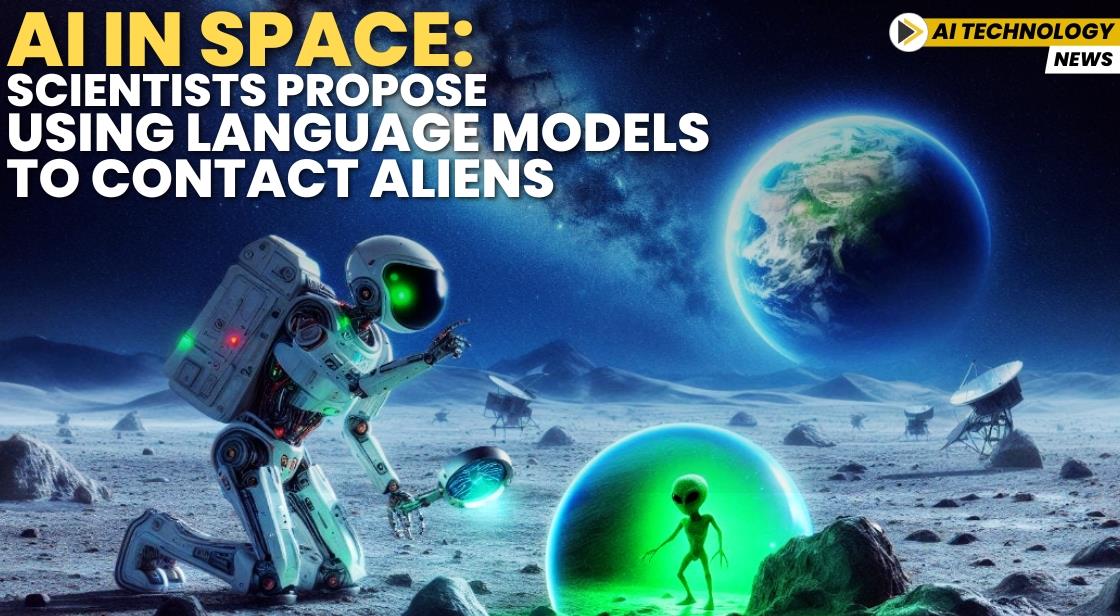AI in Space: Scientists Propose Using Language Models to Contact Aliens

News Synopsis
Artificial Intelligence (AI) is making waves on Earth, but some researchers are now advocating for its use in space exploration. They propose sending AI systems into space as a means to communicate with potential extraterrestrial civilizations. This concept, while seemingly straight out of science fiction, was recently discussed in an essay published by Scientific American.
AI in Space: A New Frontier
The idea of using AI for extraterrestrial communication is championed by Frank Marchis, Director of Citizen Science at the Search for Extraterrestrial Intelligence (SETI) Institute, and Ignacio G. López-Francos, a principal research engineer at National Aeronautics and Space Administration NASA. Both have devoted over 40 years to the search for extraterrestrial intelligence (ETI) but have yet to find any definitive signs of alien life. They argue that the search needs a fresh approach, leveraging AI technology.
Redefining Contact Strategies
Traditionally, attempts to communicate with potential extraterrestrials have included methods such as the Voyager Golden Record, which features a selection of human music and messages. However, Marchis and López-Francos believe these methods have been too simplistic and have not yielded substantial results. They propose using a sophisticated AI language model, akin to ChatGPT, to facilitate more meaningful communication.
"After 40 years of serious search, we have not found such ET intelligence, and our messages remain unanswered," write Marchis and López-Francos. "We cannot conclude that we are alone in the galaxy, given its vastness and our nascent search efforts. It may be time to radically rethink our approach. As alien-curious scientists, we propose advancing METI by transmitting not just music, maths, or brief descriptions of ourselves, but something more meaningful: a well-curated large language model that encapsulates the diverse essence of humanity and the world we live in."
Technical Approach and Challenges
The researchers suggest that a sophisticated language model, transmitted via laser, could overcome the limitations of traditional radio wave transmissions. Lasers are faster and more directional, potentially reducing the time needed for communication with distant star systems. While transmitting a full-sized language model like Meta's Llama-3-70B could take hundreds of years, the researchers believe that a downsized version could cut this time to under 20 years.
"This would enable extraterrestrial civilizations to indirectly converse with us and learn about us without being hindered by the vast distances of space and its corresponding human lifetime delays in communication. Aliens could learn one of our languages, ask the LLM questions about us, and receive replies that are representative of humanity."
The proposed AI system would not only generate text but also produce images and sounds. The content, personality, and tone of the AI would be curated by experts across various fields to ensure it accurately represents humanity.
Potential Risks and Rewards
While the idea of sending AI to space is fascinating, it comes with potential risks. Some experts caution that advanced extraterrestrial civilizations could misuse information about humanity. Despite these concerns, Marchis and López-Francos believe the potential benefits of discovering extraterrestrial life outweigh the risks.
In summary, the proposal to send AI into space represents a bold and innovative strategy in the ongoing quest to find extraterrestrial life. By leveraging advanced AI technology, researchers hope to establish a more meaningful and interactive form of communication with potential alien civilizations.
Conclusion
The idea of sending artificial intelligence into space to communicate with potential extraterrestrial civilizations represents a bold and innovative shift in our approach to the search for alien life. As outlined by researchers Frank Marchis and Ignacio G. López-Francos, the traditional methods of transmitting messages, such as the Voyager Golden Record, have not yielded significant results. Their proposal to utilize advanced AI models, like a ChatGPT-based system, aims to offer a more sophisticated and interactive means of making contact with extraterrestrial beings.
By leveraging high-speed laser technology to transmit a curated language model, scientists hope to overcome the vast distances that currently limit our ability to engage with potential alien civilizations. While the challenges are significant—ranging from technological limitations to the risks of misuse—the potential benefits of such an endeavor could be transformative. It represents a fusion of cutting-edge technology and cosmic curiosity, driving humanity toward a new frontier in space exploration and communication.
As we stand on the cusp of this exciting possibility, it is essential to consider both the scientific and ethical implications of sending AI into space. The pursuit of this ambitious goal highlights the ongoing quest to understand our place in the universe and the lengths we are willing to go to make contact with life beyond Earth.
You May Like









